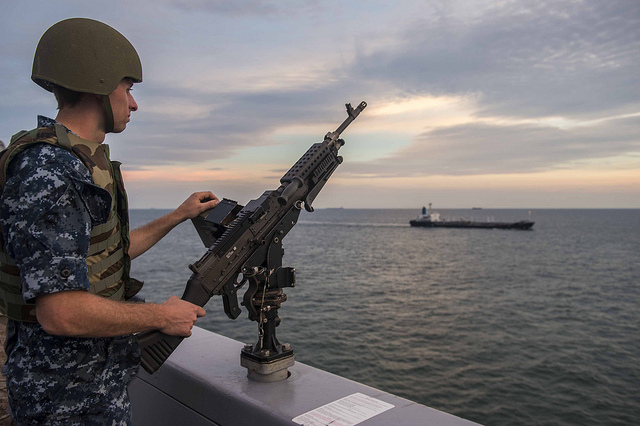by David Parmer/Tokyo
Two years ago RG21 took a look at the Malacca Strait in its Asian Waterways series. Our view was that it was possibly the most important waterway in the world. Not much has changed since then, and the “big three” issues surrounding the strait remain at the forefront: traffic, piracy and geopolitics.
The numbers for piracy in 2017 are quite encouraging. Piracy in the Malacca Strait is down 24% year-on-year since 2016. This is thanks largely to the Malacca Straits Patrol supported by maritime assets from Malaysia, Singapore and Thailand. Problematic however, is the shift in pirate activity eastward to the Sibutu Passage in the Sulu-Celebes Sea area. Joint patrols by Indonesia, Philippines and Malaysia are attempting to deal with this situation.
In 2014, we reported that the number of vessels transiting the Malacca Strait was in excess of 60,000. Last year the number jumped to more than 83,000. In such an highly trafficked area, accidents are inevitable. Two high-profile accidents have happened in the second half of this year. On August 21, the USS John S. McCain collided with an oil tanker in the strait resulting in the loss of life of 10 sailors. And in September an Indonesian tanker collided with a Dominican-registered dredger resulting in two dead and three crew missing.Traffic remains a critical problem and will probably only worsen resulting in further collisions and mishaps.
With such an important and vital waterway, it would not be surprising that geopolitics is a key concern in the equation. States with varying territorial claims and in and around the Bay of Bengal and Indian Ocean are seen to be jockeying for position to ensure their advantage in the present, and to be prepared in case of any future conflicts. Chinese, Indian and Pakistan submarines ply the waters of the region, and as of June 2017 India has stepped up its surface and airborne patrols around the Andman and Nicobar Islands in the Bay of Bengal. Australia too continues its long-standing air patrols of the region, and joint US-Indian cooperation is increasing.
So, in two more years will the area have quieted down? Probably not. While piracy might be capped, traffic and geopolitical considerations will make the Malacca Strait and its littoral and maritime regions an area that looms large on everyone’s radar.
Photo: US Pacific Fleet via flickr
 日本語
日本語 English
English 中国語
中国語